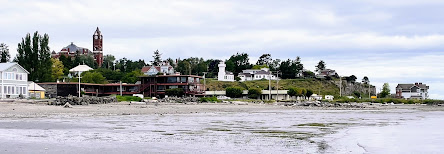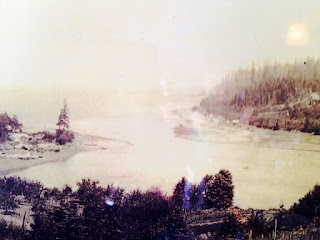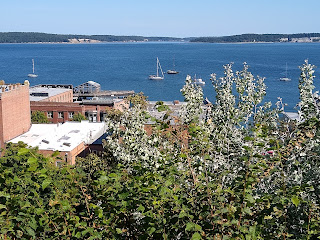As the maritime industry moved away from wood and more into steel hulls, the older boats were discarded, grounded or burned.
On Puget Sound, it became a common practice to burn the old ships from the 1920's to the 1950's. At low tides, scrap metal would be recovered.
Families would come out and set up a picnic while watching ships burn along the shore at Richmond Beach and other spots along the Sound.
Assuming this was before the environmental movement.
Here's one from Richmond Beach titled by MOHAI as "Burning hull of the steam tug "Daniel Kern," April 1939". Read more about the Kern here
Read more about the Richmond Beach burning events at this link, called the Ronald Blog - Click Here
Here's a Google Maps view of the beach north of Picnic Point where a few were burned or grounded.
The SS Bering, a former reindeer ship was bought by the Tregoning Boat Company in Ballard (Seattle) and was beached at what is now called Secret Beach.
In 1964 it was burned to make way for shore development such as the Ballard Elks Lodge. I wrote about the SS Bering in this blog post from 2000.
Older Elks members told me they played on the ship as kids, one jumping off of it into the water. At low tide you can still find burned pieces of wood with bolts and nails on the beach there.
Current View at a -1 tide...





















